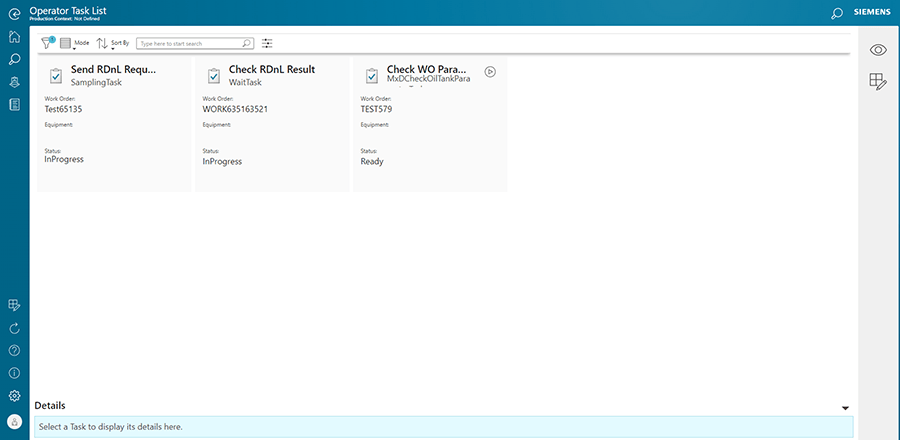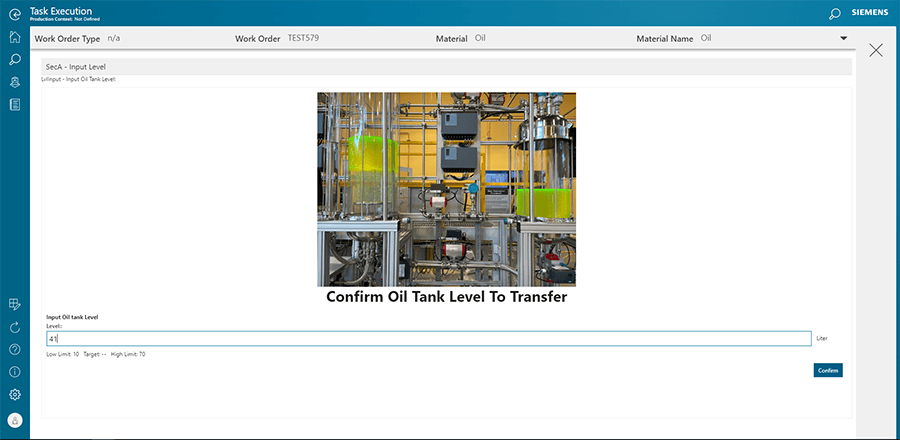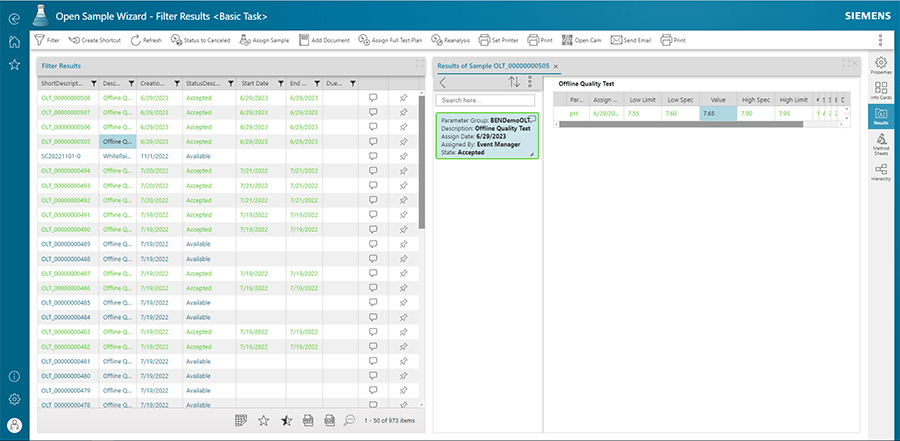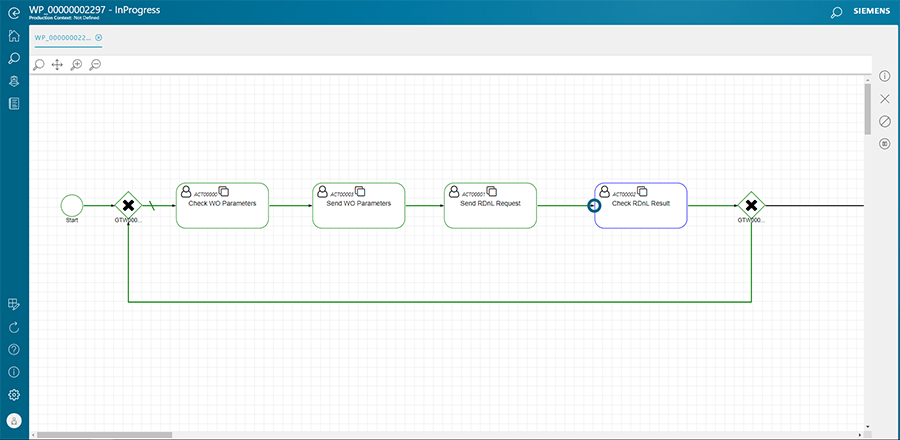DMC collaborated with Dow and Siemens to create a process demonstration testbed at MxD in Chicago. As part of this testbed, DMC integrated Siemens’ PCS neo (DCS) and Opcenter (MES) platforms to demonstrate the value of cross-communication between the ISA-95 levels 2 (DCS) and 3 (MES).
While both the Distributed Control System (DCS) and MES layers provide automation capability, they serve two very different purposes. PCS neo, our DCS, excels at device level control, sequencing, and visualization. Opcenter, our MES, is geared towards automating workflows and managing data from disparate sources.
By integrating these two layers, we demonstrate a use case of how a complex set of operations (process actions, operator actions, data logging, lab testing, etc.) can be simplified into a repeatable, streamlined standard operating procedure.
As a demonstration use case for the Manufacturing Execution System (MES) integration, we developed a simple scenario where a work order would perform a basic process action and then create a corresponding lab test to verify quality prior to product release. To integrate PCS neo and Opcenter, DMC used OPC UA to facilitate secure and robust bi-directional communication.
In Opcenter, a Supervisor would create a work order instance by selecting a preconfigured template and filling out the required information. In our demo scenario, the Supervisor is manually creating the work order and filling in the required information; however, in a real-world application, this process could be further automated such that an ERP generates the work order on a scheduled period, the completion of a batch on the process control system, etc.

After creating the work order, the Supervisor releases it to Operations. The work order will then appear in the Task List for an Operator to start.

The first thing our work order will do is prompt the Operator to input a level to charge the tank to. In our demonstration case, this could be thought of as a proxy for the Operator inputting or verifying batch formula information, performing any required manual actions, or completing any other general workflow items that are better managed in the MES layer.
Once confirmed, our work order will then send the information to our PCS neo system and trigger an automated transfer of material between the tanks to the set point the Operator previously entered.

After this transfer begins in PCS neo, Opcenter generates a separate workflow in its RD&L (Research, Development, and Laboratory) module to create a sample request to verify product quality.

Once the RD&L results are entered, it will send a passing result back to the Opcenter work order, which allows the order to be completed and the product to be released.

In addition to the above, we also demonstrated the value of putting this on mobile platforms like iPads.
Learn more about DMC’s Siemen’s partnership and contact us today for your next project.